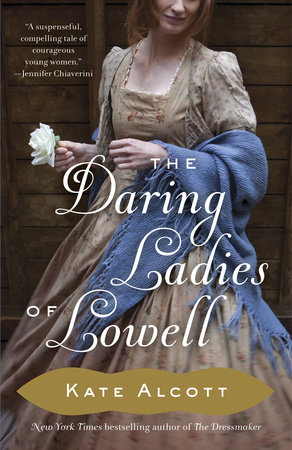Reading Group Center
- Home •
- Books by Category •
- Imprints •
- News •
- Videos •
- Media Center •
- Reading Group Center
The Daring Ladies of Lowell
By Kate Alcott
1. How is the treatment of the “factory girls” different from the way women are treated in today’s work place? How is it similar?
2. Did the descriptions of how much work went into creating simple piece of cotton cloth surprise you?
3. When Alice first meets Lovey, she doesn’t quite know what to make of Lovey’s frankness and her high spirits. What was your initial reaction to Lovey? Do you think she is reckless or a woman ahead of her time?
4. The Daring Ladies of Lowell takes place in 1832, ten years before the landmark decision in Commonwealth v. Hunt held that workers have the right to organize and strike, and more than one hundred years until federal law was passed prohibiting child labor. Why do you think progress has been so slow in protecting working people?
5. Discuss Delia and Ellie’s difficult situation and the many parallels with the challenges working mothers still deal with today: a troubled marriage, battle for custody of a child, and the difficulty working women can have in securing adequate child care.
6. Alice and her co-workers have a grueling schedule: thirteen-hour days, ceaseless physical labor, and only one day a week off. Could you make it through a “factory girl” workweek?
7. Discuss the role respectability plays in the novel, and the consequences of the secrets that are kept to save reputations (as in the case of Jonathan Fiske) and to maintain the status quo (Dr. Stanhope’s knowledge of the poor conditions and health hazards at the mill).
8. Alice forms a bond with a Samuel’s grandmother, who stands apart from the rest of the Fiske family. What does she represent and how has her influence shaped Samuel?
9. What is Alice’s most admirable trait? What is her least admirable trait?
10. What do you think the future holds for Alice and Samuel?


